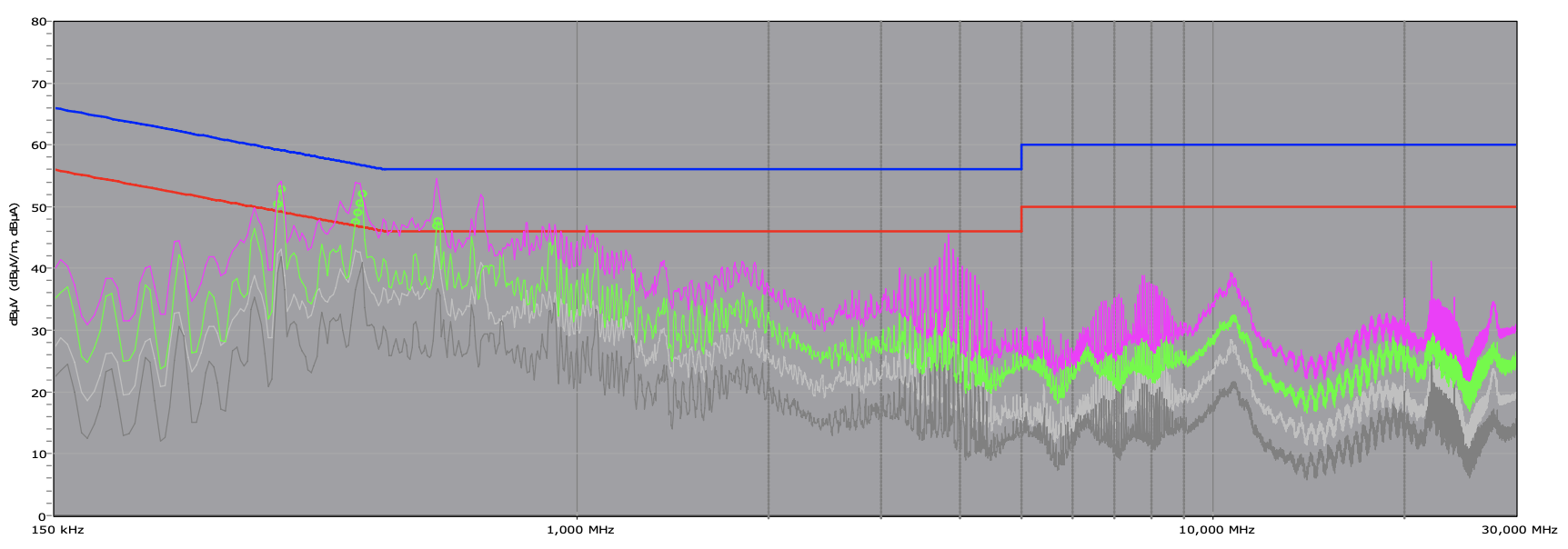Why you can trust Tom's Hardware
Advanced Transient Response Tests
For details about our transient response testing, please click here.
In the real world, power supplies are always working with loads that change. It's of immense importance, then, for the PSU to keep its rails within the ATX specification's defined ranges. The smaller the deviations, the more stable your PC will be with less stress applied to its components.
We should note that the ATX spec requires capacitive loading during the transient rests, but in our methodology, we also choose to apply a worst case scenario with no additional capacitance on the rails.
Advanced Transient Response at 20% – 20ms
| Voltage | Before | After | Change | Pass/Fail |
|---|---|---|---|---|
| 12V | 12.302V | 12.158V | 1.17% | Pass |
| 5V | 5.096V | 5.011V | 1.67% | Pass |
| 3.3V | 3.365V | 3.229V | 4.04% | Pass |
| 5VSB | 4.956V | 4.912V | 0.89% | Pass |
Advanced Transient Response at 20% – 10ms
| Voltage | Before | After | Change | Pass/Fail |
|---|---|---|---|---|
| 12V | 12.297V | 12.153V | 1.17% | Pass |
| 5V | 5.097V | 5.014V | 1.63% | Pass |
| 3.3V | 3.365V | 3.227V | 4.10% | Pass |
| 5VSB | 4.956V | 4.907V | 0.99% | Pass |
Advanced Transient Response at 20% – 1ms
| Voltage | Before | After | Change | Pass/Fail |
|---|---|---|---|---|
| 12V | 12.296V | 12.215V | 0.66% | Pass |
| 5V | 5.097V | 5.019V | 1.53% | Pass |
| 3.3V | 3.365V | 3.227V | 4.10% | Pass |
| 5VSB | 4.956V | 4.912V | 0.89% | Pass |
Advanced Transient Response at 50% – 20ms
| Voltage | Before | After | Change | Pass/Fail |
|---|---|---|---|---|
| 12V | 12.290V | 12.193V | 0.79% | Pass |
| 5V | 5.090V | 5.002V | 1.73% | Pass |
| 3.3V | 3.359V | 3.215V | 4.29% | Pass |
| 5VSB | 4.917V | 4.880V | 0.75% | Pass |
Advanced Transient Response at 50% – 10ms
| Voltage | Before | After | Change | Pass/Fail |
|---|---|---|---|---|
| 12V | 12.288V | 12.190V | 0.80% | Pass |
| 5V | 5.090V | 5.004V | 1.69% | Pass |
| 3.3V | 3.359V | 3.216V | 4.26% | Pass |
| 5VSB | 4.917V | 4.876V | 0.83% | Pass |
Advanced Transient Response at 50% – 1ms
| Voltage | Before | After | Change | Pass/Fail |
|---|---|---|---|---|
| 12V | 12.286V | 12.188V | 0.80% | Pass |
| 5V | 5.091V | 5.007V | 1.65% | Pass |
| 3.3V | 3.359V | 3.215V | 4.29% | Pass |
| 5VSB | 4.917V | 4.886V | 0.63% | Pass |







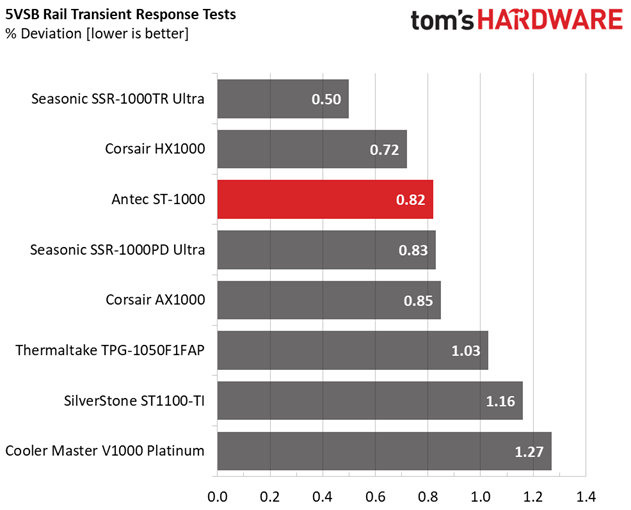
The transient response at +12V is satisfactory since the average deviation with 50Hz load repetition rate is within 1% . The worst performing rail in these tests is 3.3V, which exceeds 4% deviation.
Turn-On Transient Tests
In the next set of tests, we measure the PSU's response in simpler transient load scenarios—during its power-on phase. Ideally, we don't want to see any voltage overshoots or spikes since those put a lot of stress on the DC-DC converters of installed components.

Turn-On Transient Response Scope Shots


There is a small voltage overshoot at 5VSB, and the +12V rail takes some time till it reaches the nominal voltage.
Power Supply Timing Tests
There are several signals generated by the power supply, which need to be within specified, by the ATX spec, ranges. If they are not, there can be compatibility issues with other system parts, especially mainboards. From year 2020, the PSU's Power-on time (T1) has to be lower than 150ms and the PWR_OK delay (T3) from 100 to 150ms, to be compatible with the Alternative Sleep Mode.
Get Tom's Hardware's best news and in-depth reviews, straight to your inbox.
PSU Timings Table
| T1 (Power-on time) & T3 (PWR_OK delay) | ||
|---|---|---|
| Load | T1 | T3 |
| 20% | 132ms | 322ms |
| 50% | 144ms | 324ms |
The PWR_OK delay is out of the 100-150ms region, so the PSU does not support the alternative sleep mode, which is recommended by the ATX spec.
Ripple Measurements
Ripple represent the AC fluctuations (periodic) and noise (random) found in the PSU's DC rails. This phenomenon significantly decreases the capacitors' lifespan because it causes them to run hotter. A 10-degree Celsius increase can cut into a cap's useful life by 50%. Ripple also plays an important role in overall system stability, especially when overclocking is involved.
The ripple limits, according to the ATX specification, are 120mV (+12V) and 50mV (5V, 3.3V, and 5VSB).
| Test | 12V | 5V | 3.3V | 5VSB | Pass/Fail |
|---|---|---|---|---|---|
| 10% Load | 9.2 mV | 6.4 mV | 12.2 mV | 3.6 mV | Pass |
| 20% Load | 11.6 mV | 6.5 mV | 12.8 mV | 4.1 mV | Pass |
| 30% Load | 11.0 mV | 7.0 mV | 14.2 mV | 4.5 mV | Pass |
| 40% Load | 8.6 mV | 7.4 mV | 13.9 mV | 5.2 mV | Pass |
| 50% Load | 8.5 mV | 8.0 mV | 15.5 mV | 5.4 mV | Pass |
| 60% Load | 8.9 mV | 7.4 mV | 14.9 mV | 5.9 mV | Pass |
| 70% Load | 9.7 mV | 7.5 mV | 15.7 mV | 6.5 mV | Pass |
| 80% Load | 10.6 mV | 8.7 mV | 16.4 mV | 6.6 mV | Pass |
| 90% Load | 11.3 mV | 8.2 mV | 16.3 mV | 7.2 mV | Pass |
| 100% Load | 18.0 mV | 8.5 mV | 17.2 mV | 9.0 mV | Pass |
| 110% Load | 18.9 mV | 8.9 mV | 17.1 mV | 9.3 mV | Pass |
| Crossload 1 | 13.5 mV | 9.0 mV | 18.8 mV | 4.3 mV | Pass |
| Crossload 2 | 18.3 mV | 7.8 mV | 13.8 mV | 8.8 mV | Pass |




The ripple suppressions is great on all rails.
Ripple At Full Load

Ripple Full Load Scope Shots



Ripple At 110% Load

Ripple 110% Load Scope Shots
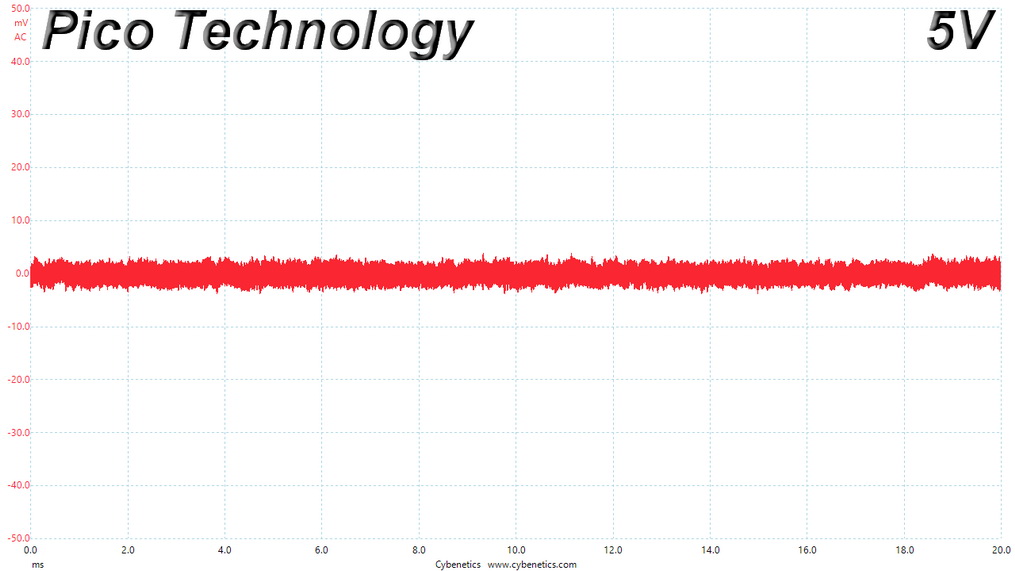


Ripple At Cross-Load 1
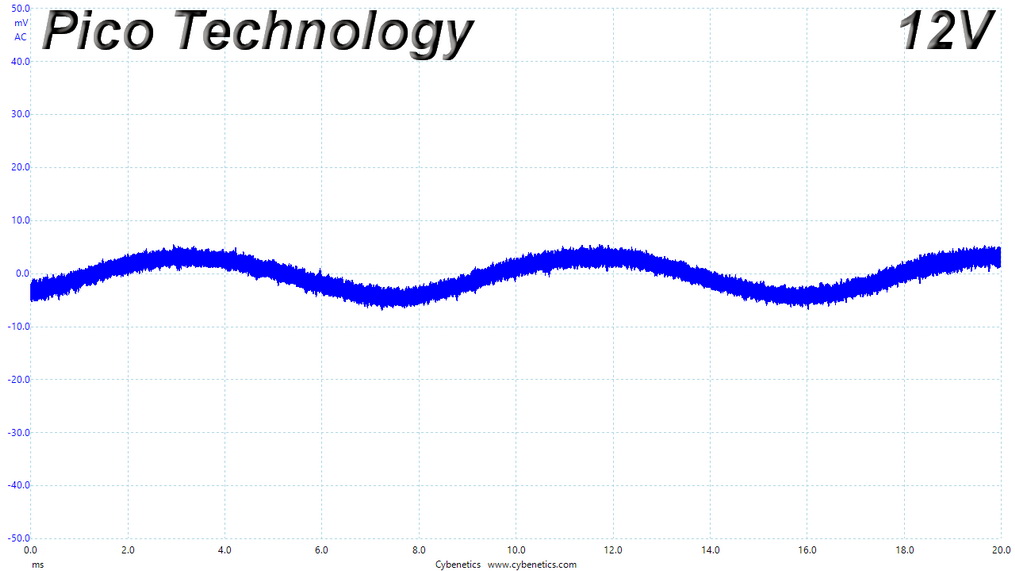
Ripple CL1 Load Scope Shots



Ripple At Cross-Load 2

Ripple CL2 Load Scope Shots

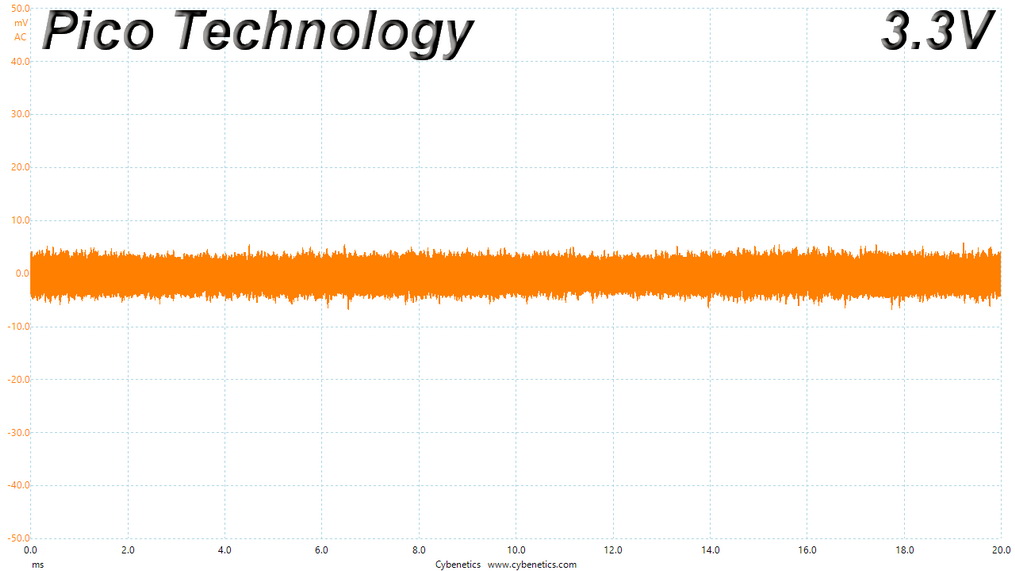

EMC Pre-Compliance Testing – Average & Quasi-Peak EMI Detector Results
Electromagnetic Compatibility (EMC) is the ability of a device to operate properly in its environment without disrupting the proper operation of other nearby devices.
Electromagnetic Interference (EMI) stands for the electromagnetic energy a device emits, and it can cause problems in other nearby devices if too high. For example, it can be the cause of increased static noise in your headphones or/and speakers.
There are some spurs that exceed the limits, in the 300-600KHz zone, with the AVG detector, but there are no problems with the QP detector which is the most accurate.
MORE: Best Power Supplies
MORE: How We Test Power Supplies
MORE: All Power Supply Content
Current page: Transient Response Tests, Timing Tests, Ripple Measurements and EMC Pre-Compliance Testing
Prev Page Protection Features, DC Power Sequencing, Cross-Load Tests and Infrared Images Next Page Performance, Noise and Efficiency
Aris Mpitziopoulos is a contributing editor at Tom's Hardware, covering PSUs.
-
refillable This is the first review I saw on the Seasonic titanum platform. Looks good on paper but I'd personally avoid it. Are you not extremely concerned about that sky-high OCP? I mean 117 A, that's huge! What if something went wrong? Wouldn't that instantly fry something? Shame Seasonic doesn't bother having multi-rail OCP on a 1000W unit. Something like the HX1000 I think is a better option with multi-rail OCP. I think 1000+ W PSUs without multi-rail OCP is just asking for trouble.Reply
I wonder why you don't seem to agree with this and instead give this thing an editor choice award. -
Aris_Mp Replyrefillable said:This is the first review I saw on the Seasonic titanum platform. Looks good on paper but I'd personally avoid it. Are you not extremely concerned about that sky-high OCP? I mean 117 A, that's huge! What if something went wrong? Wouldn't that instantly fry something? Shame Seasonic doesn't bother having multi-rail OCP on a 1000W unit. Something like the HX1000 I think is a better option with multi-rail OCP. I think 1000+ W PSUs without multi-rail OCP is just asking for trouble.
I wonder why you don't seem to agree with this and instead give this thing an editor choice award.
The HX1000 also has a single +12V rail: https://www.tomshardware.com/reviews/corsair-hx1000-psu,5214.html -
refillable Reply
No, it definitely has multi-rail OCP around 40A, a huge difference from 117A seen in this seasonic platform. You said that here:Aris_Mp said:The HX1000 also has a single +12V rail: https://www.tomshardware.com/reviews/corsair-hx1000-psu,5214.html
https://www.tomshardware.com/reviews/corsair-hx1000-psu,5214-6.html -
javiindo It would be nice to precise the use case for each power supply. Because the power supply is recommended, but you don't indicate for what. For 1000W maybe a threadripper 3990X with two 2080 ti in SLI?Reply -
waltc3 Replyrefillable said:No, it definitely has multi-rail OCP around 40A, a huge difference from 117A seen in this seasonic platform. You said that here:
https://www.tomshardware.com/reviews/corsair-hx1000-psu,5214-6.html
Yes, the Corsair HX-850 has a single/multi-rail hardware switch for either a single 72A 12v rail or else 7 40A rails...;) https://www.kitguru.net/components/power-supplies/zardon/corsair-hx850-platinum-2017-power-supply-review/3/ -
emgarf Please consider providing power-off rail sequencing as well as power-on. Both are important.Reply -
Aris_Mp Reply
LOL my bad, totally missed that :)refillable said:No, it definitely has multi-rail OCP around 40A, a huge difference from 117A seen in this seasonic platform. You said that here:
https://www.tomshardware.com/reviews/corsair-hx1000-psu,5214-6.html -
refillable Reply
So, which one do you prefer? The HX seems to as quiet despite efficiency difference, so I don't think the Titanium efficiency matters. Plus, the HX is also cheaper here and in many other countries such as the US and Australia. I think the HX is a much better choice, or at least should be honourably mentioned.Aris_Mp said:LOL my bad, totally missed that :)
